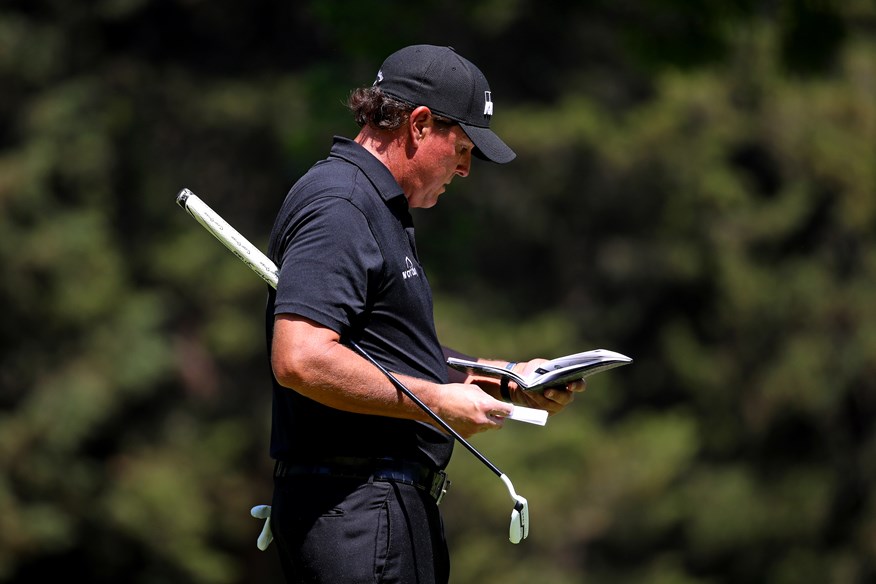R&A and USGA plan to limit use of green reading materials
Last updated:
The R&A and USGA announce plans to limit use of green reading materials from 2019 as they concede green-reading books ‘tip the balance too far away from the essential skill’.
The R&A and the USGA are proposing regulations regarding the use of green-reading materials in a bid to reaffirm the need for a player to read greens based on their own judgement, skill and ability.
It doesn’t mean that green-books are banned altogether, but rather a maximum scale will be intrdouced and the information available on them will be hugely limited with a minimum slope indication limit, showing only slopes that are more than 4% (2.29 degrees). The governing bodies say that this proposed limit also equates roughly with the amount of slope that is readily visible to the naked eye.
The news doesn’t come as a huge shock given that Jordan Spieth talked about a limit next year on green-books during The Open, before GolfWeek confirmed that there would be an announcement in the coming weeks.
“I don’t think we’re allowed to use them starting next year, is that right?” Spieth had said.
“Which I think will be much better for me. I think that’s a skill that I have in green reading that’s advantageous versus the field, and so it will be nice. But while it’s there, certain putts, I certainly was using it and listening to it.”
Following a six-week period of feedback and consultation with interested parties that begins today, the regulations will be finalised in a published “interpretation” of Rule 4.3 (Use of Equipment) and adopted 1 January 2019, when golf’s new rules take effect.
David Rickman, Executive Director – Governance at The R&A, said, “We have looked carefully at the use of these green-reading materials and the extremely detailed information they provide and our view is that they tip the balance too far away from the essential skill and judgement required to read subtle slopes on the greens. It is important to be clear, however, that we still regard the use of yardage books and handwritten notes to be an entirely appropriate part of the game.”
“Both the USGA and The R&A are committed to the position that a player’s ability to read their line of play on the putting green is an essential skill that should be retained,” said Thomas Pagel, Senior Director, Rules of Golf and Amateur Status for the USGA. “The focus of the interpretation is to develop an approach that is both effective and enforceable.”
Limit of green reading materials: The key elements of the proposed interpretation
Minimum Slope Indication Limit
A minimum slope indication limit of 4% (2.29 degrees) is proposed (this includes lines, arrows, numbers or any other indicators); this will have the effect of eliminating such indicators of slope from those areas of the putting green where the hole is most likely to be positioned (which tend to be cut on reasonably flat sections of the putting green with a degree of slope of less than 3.5% – or 2 degrees). This proposed limit also equates roughly with the amount of slope that is readily visible to the naked eye.
Maximum Scale Limit
A maximum scale of 3/8 inch to 5 yards (1:480) is proposed; this will limit the size in print form to a pocket-sized publication and has the effect of restricting the space for handwritten notes (also referenced below).
Indicative Information –
General information that is included in traditional yardage books or course guides, such as basic illustrations that show the outline of the putting green and include indicative information like the tops of ridges or general slopes, will continue to be permitted.
Handwritten Notes
Handwritten notes will continue to be allowed but such notes cannot be used to create either a direct copy or a facsimile (replica) of a detailed green map.
Interested parties are encouraged to contact The R&A at rulesmail@randa.org or the USGA with questions, feedback or suggestions for improvement prior to 14 September 2018. The draft interpretation and illustrations can be viewed here.
The governing bodies will issue the regulation by no later than 15 October 2018 for its planned adoption on 1 January 2019.

